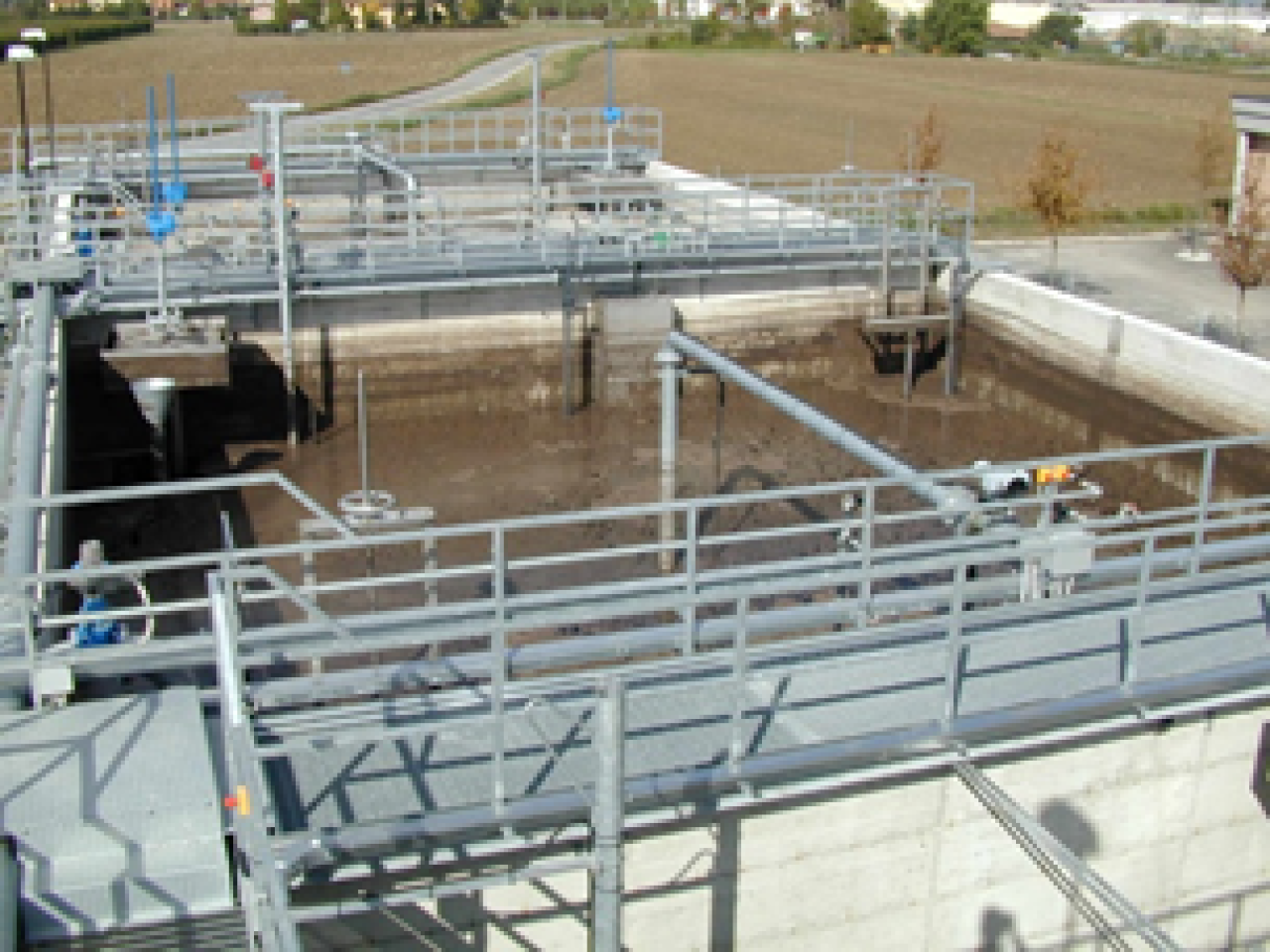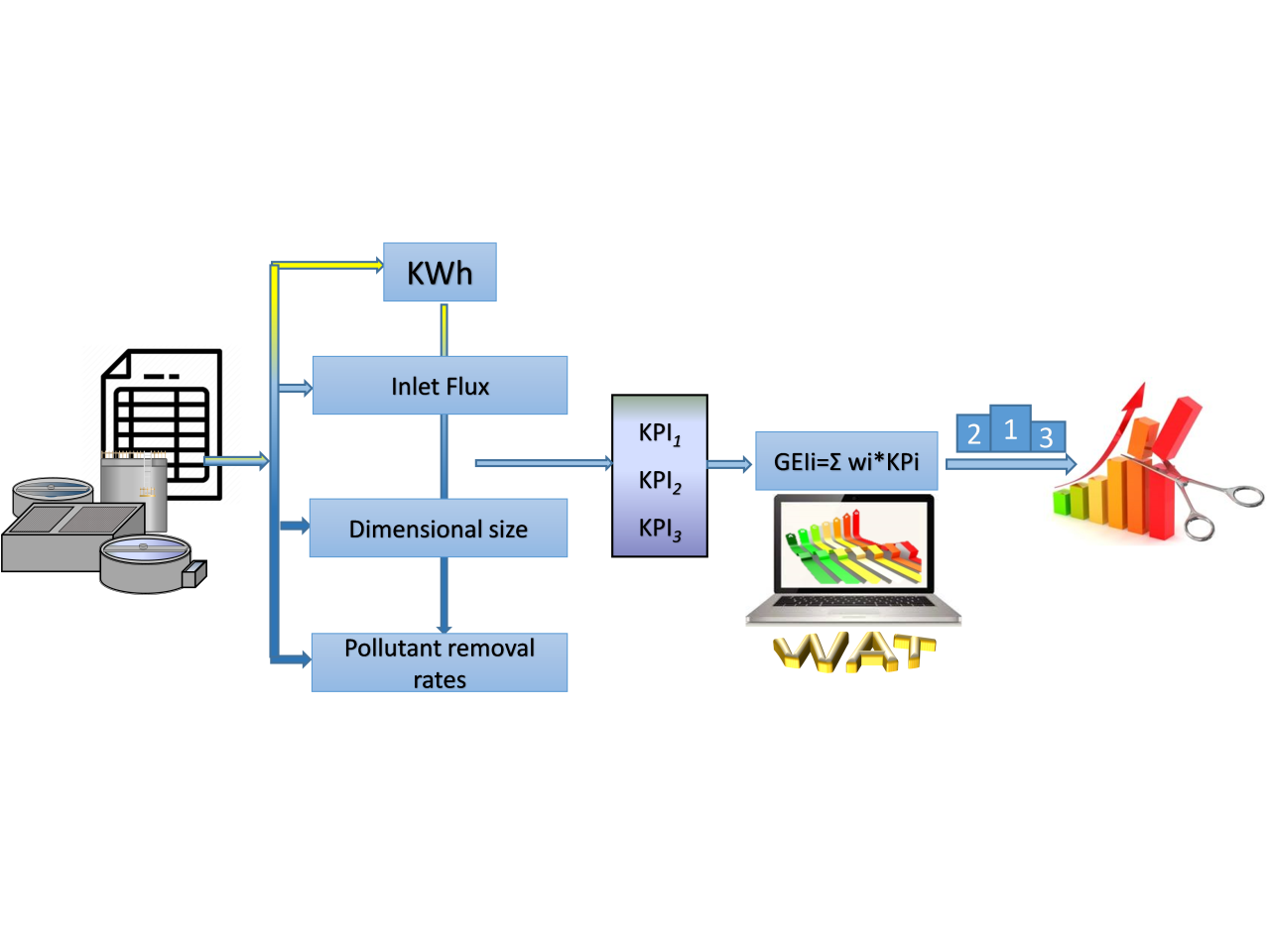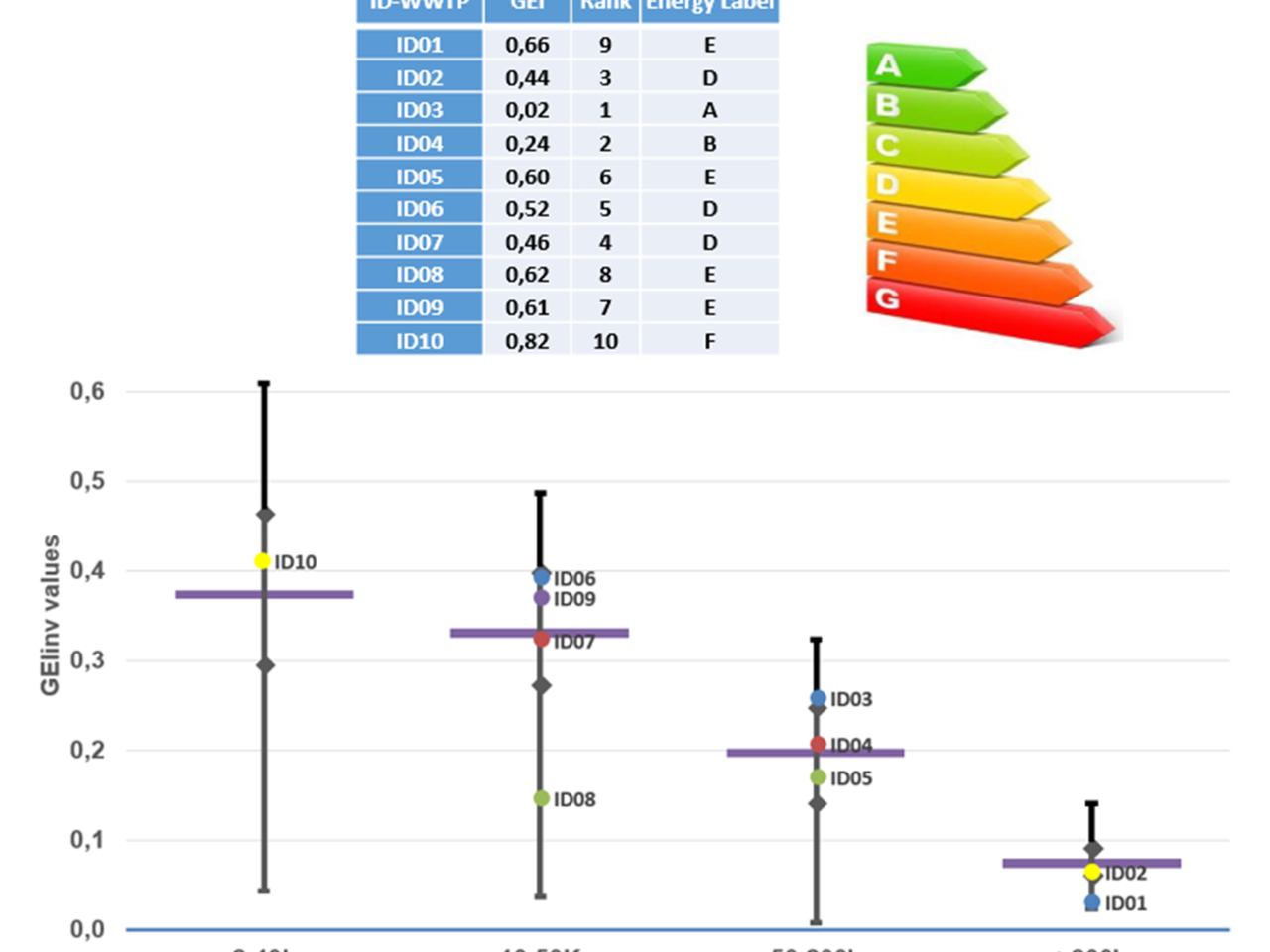The product allows to carry out an energy performance assessment in municipal wastewater treatment plants (WWTPs). Following a preliminary data collection and related statistical processing, specific energy performance indicators are introduced in order to implement a benchmark analysis and a labelling procedure. The related outcomes can be used to classify WWTPs on the basis of reference sector's energy consumptions, also allowing the estimation of potential margins for energy savings. The product seeks to support decision-makers to plan actions aimed at enhancing the energy efficiency of the wastewater treatment sector and, at the same time, boosting its economic and environmental sustainability.
 Example of a wastewater treatment plant
Example of a wastewater treatment plant
Nowadays, with regard to the wastewater treatment sector, a rapid method enabling the assessment of energy balances and the evaluation of potential efficiency margins is still not available. Furthermore, accurate energy diagnoses or process modeling require relevant investments in economic and human resources. The proposed methodology lies ahead of such detailed analyzes and makes use of data commonly owned by WWTPs operators allowing to quickly define a priority order for technical-managerial interventions to be planned in order to improve their energy efficiency.
The methodology provides the energy balances assessment in WWTPs, allowing to: • evaluate WWTPs energy efficiency; • perform a comparative energy assessment and benchmarking among several WWTPs; • identify WWTPs with larger energy efficiency margins and roughly quantify the energy savings potential; • address decision-makers to plan investments to promote measures for WWTPs energy efficiency.
 Chart of the developed methodology
Chart of the developed methodology
Energy classification and labelling of 10 WWTPs in Emilia-Romagna region
The methodology relies on a structured reference database, built by collecting information on over 250 wastewater treatment plants. The procedure was applied to a case study of 10 plants in Emilia-Romagna region. Data referred to energy consumptions and WWTPs size (P.E.), flow rate, main contaminants concentrations in the raw influent and effluent, were acquired directly by plant operators to be later validated by means of statistical tests and processed for the calculation of Key Performance Indicators. Afterward, KPIs were linearly aggregated through specific weighting factors for Global Energy Index (GEI) values calculation. Such steps processes allow to carry out a benchmarking analysis for potential energy efficiency margins assessment. Moreover, the definition of energy performance classes led to assign an "energy label" to each plant.
The procedure, developed by ENEA for the wastewater treatment sector, was applied to WWTPs placed in the Emilia-Romagna region
The methodology is defined for the wastewater treatment sector and is based on statistical techniques and data analysis, so it can be transferred to other contexts to provide an energy performance assessment. Reliable sector reference data are required. In this sense, business partners are sought for further applications.
 Values of global energy consumption index (GEI), labelling and positioning of 10 WWTPs according to their energy performances, through comparative analysis based on plant dimensions
Values of global energy consumption index (GEI), labelling and positioning of 10 WWTPs according to their energy performances, through comparative analysis based on plant dimensions

